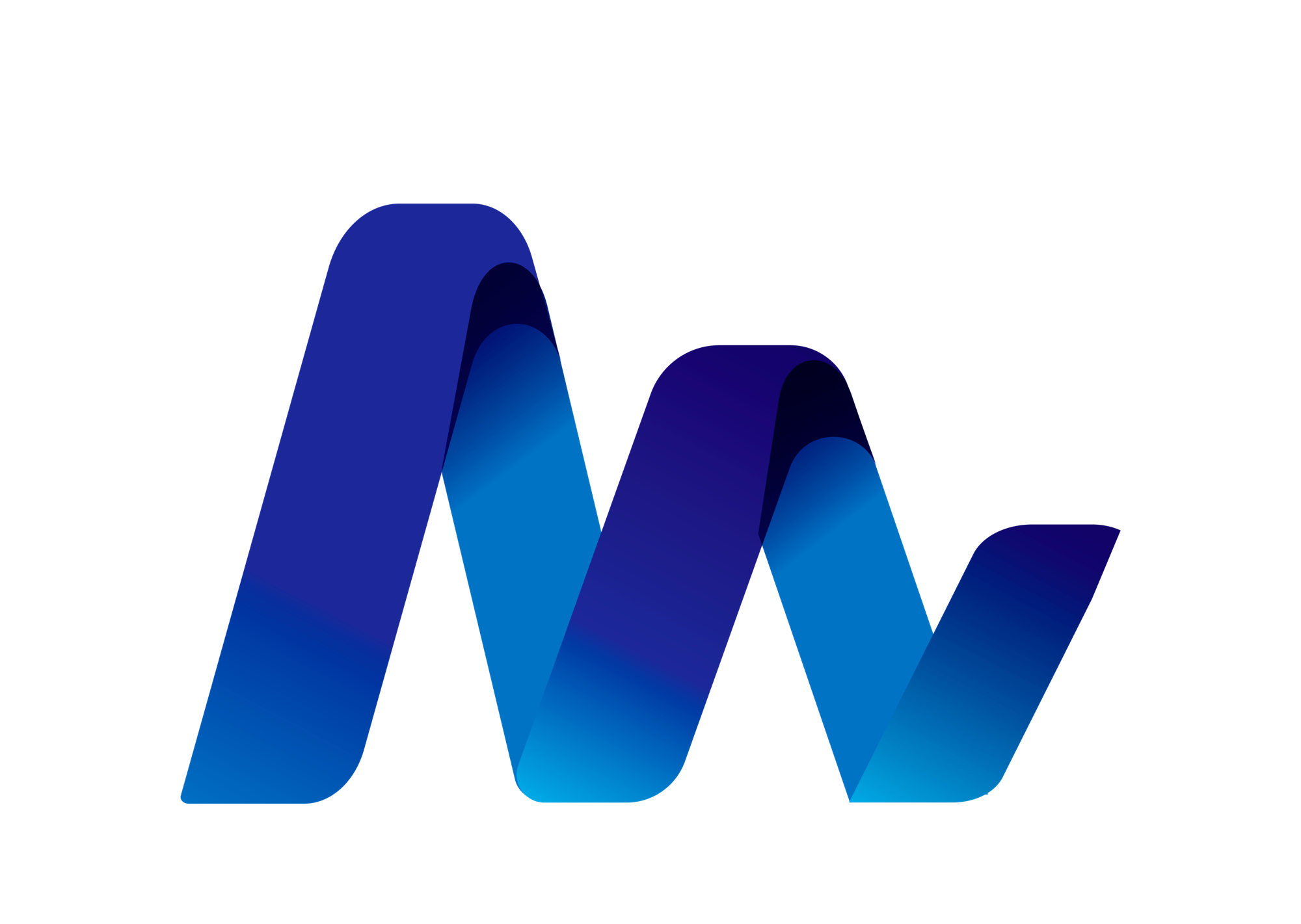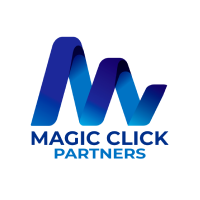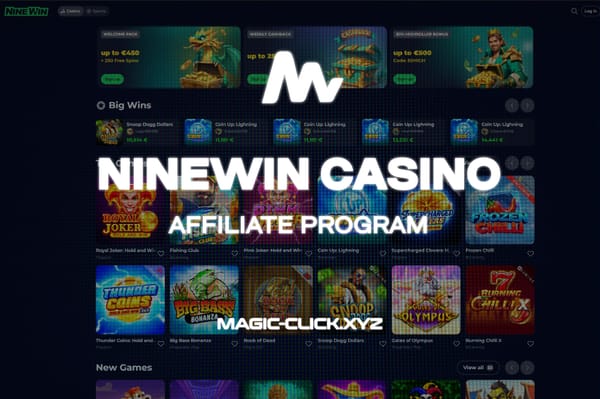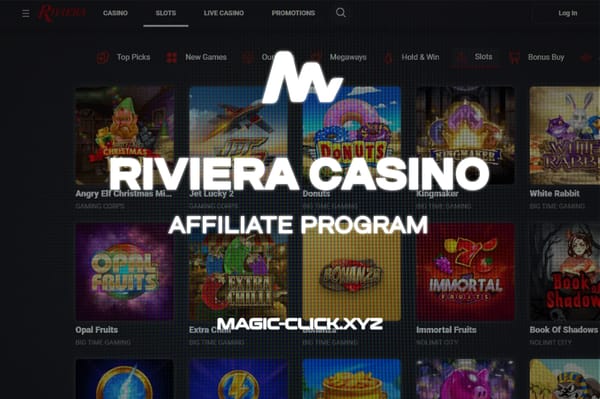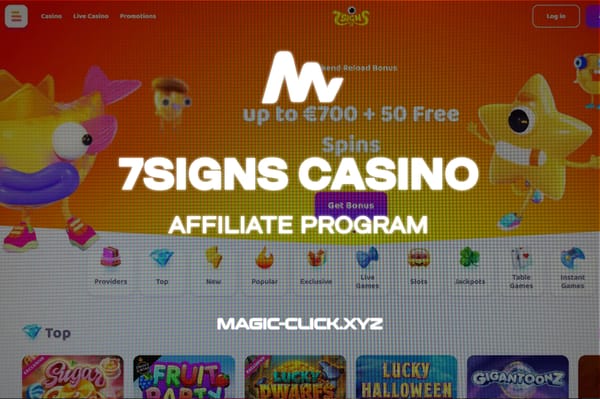What is PPC (Pay Per Click) and PPC marketing
Pay Per Click (PPC) is an advertising payment model where advertisers pay for each click on their ad. A click is counted when a user clicks…

Pay Per Click (PPC) is an advertising payment model where advertisers pay for each click on their ad. A click is counted when a user clicks on the ad and is redirected to a target page, such as a landing page or a product page.
PPC advertising is used in various forms of contextual advertising to promote:
- In search engines
- In teaser networks
- On affiliate websites
The goal of “pay per click” is to save the advertising budget by avoiding irrelevant traffic and attracting the maximum number of leads. Advertisers do not pay just for ad impressions — since ads can be viewed without being clicked on. PPC marketing attracts only targeted users who see the ad, show interest in the product, click on the link, and go to the target page.

⠀ Magic Click Partners — Reliable CPA network with over 500 offers in ⠀⠀⠀⠀⠀⠀⠀⠀iGaming and Betting verticals from direct advertisers.

How PPC Increases Marketing Efficiency
Using the “pay per click” model, marketers increase the efficiency of the initial stages of the sales funnel by attracting interested leads to the website rather than random users. These leads are more likely to make a purchase or remember the company and return to the site in the future.
How to Use PPC in Marketing
Marketers create creatives and launch ads. Any format can be chosen, such as static or dynamic banners or contextual ads. The ads are then placed on a suitable advertising platform, like Yandex Search.
PPC ads are shown based on keywords. When a user enters a query in the search engine, it generates two types of results — advertising and organic. The advertising results always appear higher, which is where your PPC ad will be displayed.
There are low-competition queries (fewer than 100 queries per month), which will make the ads cheaper but result in lower traffic. High-competition queries will bring more leads but at a higher advertising cost. The advertising platform conducts a bid auction to determine which ads to place higher in the ad results. This auction happens automatically and within fractions of a second before the results are displayed. Ads with the highest bids get the top positions.
This is why it’s crucial to monitor ad bids in PPC advertising. It helps avoid overspending on overly expensive clicks.
The Difference Between PPC and CPC
PPC
- A payment model — an algorithm determining the price per ad click.
- PPC defines how the advertiser will pay for the ads.
CPC
- The specific cost per click that the advertising platform deducts from the advertiser’s account.
- CPC defines the price the advertiser will pay.
By understanding and utilizing PPC effectively, marketers can enhance their ad campaigns, attract more qualified leads, and optimize their advertising budgets.
Other Payment Models in Advertising
Advertising platforms use various payment models, with PPC (Pay Per Click) and CPM (Cost Per Mille) being the most popular. While PPC is calculated per click on the ad, CPM is calculated per 1,000 ad impressions. With CPM, advertisers pay not only for targeted clicks but also for non-targeted impressions.
Pros and Cons of the PPC Model in Advertising
Pros
- Lower promotion costs: Advertisers pay only for clicks. If an uninterested user sees the ad, no money is deducted for the impression.
- More targeted traffic: The site attracts interested leads who are more likely to convert into customers.
- Quick results: PPC ads start generating traffic immediately after launch.
- Flexible settings: Ads can be modified at any time after launch — adding keywords, improving the unique selling proposition (USP), updating graphics, or changing links.
- Convenient targeting: Ads can be tailored not only to user search queries but also to specific regions or times of the day, helping to save the budget on irrelevant clicks.
Cons
- High click costs: In highly competitive niches, the cost per click can be high. Advertisers may need to increase their bids in auctions to secure a top position in search results.
- Reputation issues: Users often can’t distinguish between paid and organic search results. Search engines label ads as “Ad,” which some users intentionally skip, perceiving them as intrusive rather than helpful.
- Budget limitations: When the advertising budget is exhausted, PPC ads stop showing. To continue displaying ads, the account must be replenished.
By understanding these payment models and their respective advantages and disadvantages, advertisers can choose the best strategy to optimize their campaigns and achieve their marketing goals effectively.
How to Track PPC Advertising Effectiveness
To determine if your PPC advertising is effective, it’s essential to monitor ad performance and analyze key metrics. Here are the crucial indicators to evaluate for PPC campaigns:
- CTR (Click-Through Rate): This shows the percentage of users who clicked on your ad out of those who saw it. A low CTR indicates that the creative isn’t working — it’s time to revamp the CTA, change the graphics, or create a more compelling headline.
- Conversion Rate: This measures the number of leads who completed a desired action, such as filling out a form or making a purchase. Ads with a low conversion rate are inefficient, as money is spent on running the ads, but few leads or sales are generated.
- ROI (Return on Investment): This metric shows the profitability of your investment. If the costs of running the ad are not being recouped, it might be time to turn off the ad.
- CAC (Customer Acquisition Cost): This indicates how much the business spends to acquire one customer. A high CAC suggests that the ad campaign is not cost-effective and adjustments are needed.
By regularly tracking and analyzing these metrics, you can ensure that your PPC advertising campaigns are effective and make necessary adjustments to optimize performance and return on investment.
Skills a PPC Specialist Should Have
- Testing Advertising Tools and Platforms: It’s crucial to constantly monitor trends and understand which platforms and services can display ads with lower click costs.
- Participating in Traffic Funnel Development: The company needs to have a clear understanding of the priority directions for product advertising, requiring the expertise of a PPC specialist.
- Adapting Campaigns to Different Platforms: A PPC specialist must understand the differences between teaser networks and Yandex.Direct, know how Yandex Advertising Network (YAN) and Google Display Network (GDN) work, and what is needed to launch contextual ads on social networks.
- Constantly Monitoring Advertising Campaigns: This is one of the main tasks of a PPC specialist. They must track the effectiveness of ads, monitor platform metrics, quickly make changes to ads, and skillfully manage ad bids to avoid spending the entire budget on high-competition queries.
By mastering these skills, a PPC specialist can effectively manage and optimize advertising campaigns, ensuring maximum return on investment.
